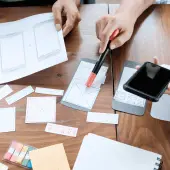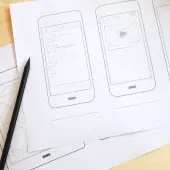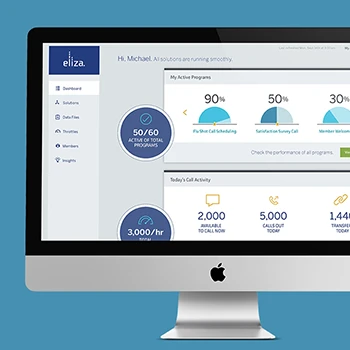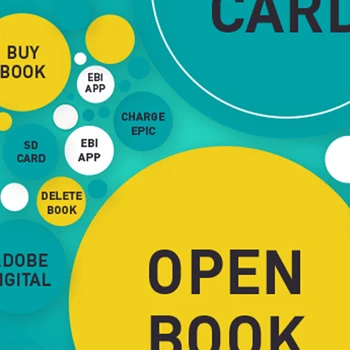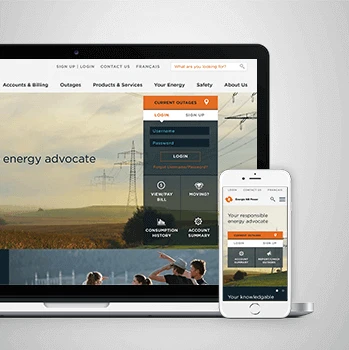What is co-design and how does it differ from traditional design approaches?
Co-design is a collaborative process where we work directly with your stakeholders, users, and internal team members to create solutions together. Unlike traditional design approaches where designers work in isolation and present finished concepts, co-design involves continuous participation from all stakeholders throughout the entire design process. This creates shared ownership, deeper insights, and solutions that truly meet user needs. Based on our Experience Thinking framework, co-design ensures that brand, content, product, and service experiences are developed holistically with input from those who understand your business and users best.
Tip: Start with small co-design sessions focused on specific user challenges to build trust and demonstrate value before expanding to larger initiatives.
Why is co-design essential for creating connected experiences?
Co-design creates connected experiences by bringing together diverse perspectives from the start. As outlined in the Experience Thinking approach, experiences consist of multiple interconnected elements - timing, interaction, intensity, coverage, and meaning. When stakeholders collaborate directly in the design process, they can identify these connections and dependencies that individual designers might miss. Co-design sessions reveal how different parts of your organization impact the user experience, ensuring that the final solution works as a cohesive system rather than isolated components.
Tip: Map out all stakeholder touchpoints before your first co-design session so participants understand how their role connects to the broader experience.
How does co-design align with the Experience Thinking framework?
Co-design is perfectly aligned with Experience Thinking because both prioritize understanding the complete experience from the user's perspective. The Experience Thinking framework examines four key areas: brand, content, product, and service experiences. Through co-design workshops, we bring together stakeholders from each of these areas to ensure all four quadrants are designed intentionally and work together seamlessly. This collaborative approach prevents the common problem of designing experiences in silos, which often leads to disconnected user journeys.
Tip: Include representatives from marketing, content, product, and service delivery in your co-design sessions to address all four Experience Thinking quadrants.
What makes Akendi's co-design approach unique?
Our co-design approach is grounded in over 16 years of experience research and design excellence. We combine behavioral science insights with collaborative workshops that are both structured and creative. Our facilitators guide sessions using proven methods while ensuring every participant's voice is heard. We focus on creating experiences that are effortlessly intuitive and delightful to use, drawing from our deep understanding of user behavior and design principles. Our co-design sessions always start with understanding available user research and end with testable prototypes.
Tip: Come prepared with your business goals and user insights clearly defined - this helps us structure co-design sessions that deliver actionable outcomes.
When should organizations consider co-design over other design methods?
Co-design is ideal when you need buy-in from multiple stakeholders, when the solution impacts various departments, or when you're tackling complex user problems that require domain expertise. It's particularly valuable for service design challenges, digital transformation projects, or when you're designing for users with specialized needs. According to Experience Thinking principles, co-design works best when you're creating end-to-end experiences that span multiple touchpoints and require coordination across different parts of your organization.
Tip: Consider co-design when your project success depends on internal alignment and stakeholder commitment to implementation.
How does co-design address the challenge of designing for complex user journeys?
Complex user journeys require input from multiple perspectives to be designed effectively. Co-design brings together stakeholders who understand different parts of the user journey, creating a complete picture of the experience. Through collaborative workshops, participants map out the entire lifecycle from awareness to advocacy, identifying pain points and opportunities that individual contributors might miss. This approach ensures that the experience flows naturally from one stage to the next, addressing the Experience Thinking principle that experiences should be connected and purposeful.
Tip: Begin co-design sessions by mapping the current user journey together before designing the improved experience - this builds shared understanding.
What role does empathy play in co-design workshops?
Empathy is central to effective co-design because it helps participants understand user perspectives and needs. During workshops, we guide stakeholders through exercises that build empathy for users, helping them see beyond their own assumptions and organizational constraints. This empathetic understanding drives better design decisions and creates solutions that truly serve user needs. When participants develop empathy for users, they become advocates for user-centered design within their organization, extending the impact of co-design beyond the workshop itself.
Tip: Share user research findings and real user stories at the beginning of co-design sessions to build participant empathy and context.
How does co-design help organizations avoid the common trap of designing based on assumptions?
Co-design prevents assumption-based design by grounding all decisions in user research and diverse stakeholder input. Before workshops begin, we conduct user research to understand actual user needs and behaviors. During co-design sessions, we reference this research continuously, ensuring that creative ideas are validated against real user insights. The collaborative nature of co-design also helps surface and challenge assumptions - when multiple perspectives are present, participants naturally question each other's assumptions and push for evidence-based decisions.
Tip: Prepare user personas and journey maps before co-design sessions so participants can reference real user data throughout the collaborative process.
What does a typical co-design workshop process look like?
Our co-design process follows a structured approach that begins with user research and stakeholder interviews to understand the challenge. We then facilitate collaborative workshops where participants work through divergent thinking exercises to generate ideas, followed by convergent activities to refine and prioritize solutions. Sessions include sketching, prototyping, journey mapping, and user scenario creation. We conclude with testable concepts and clear next steps. The entire process is designed to build shared understanding while creating actionable outcomes that participants can implement.
Tip: Block out sufficient time for co-design workshops - rushing the process reduces the quality of collaborative thinking and buy-in.
How do you structure co-design sessions to ensure productive collaboration?
We structure sessions using proven facilitation techniques that balance creative exploration with focused outcomes. Each workshop includes warm-up exercises to build rapport, clear objectives for each activity, and structured discussion formats that ensure all voices are heard. We use visual collaboration tools, time-boxed activities, and regular check-ins to maintain momentum. Our facilitators guide participants through the process while letting them drive the content creation, ensuring genuine collaboration rather than guided presentation.
Tip: Set ground rules at the beginning of sessions that encourage building on ideas rather than critiquing them - this creates a more productive collaborative environment.
What tools and techniques do you use during co-design workshops?
We use a mix of digital and analog tools depending on the workshop format and participant preferences. Physical workshops often feature whiteboards, sticky notes, sketching materials, and prototype building supplies. For remote sessions, we use collaborative platforms like Miro or Figma that allow real-time collaboration. Our toolkit includes journey mapping templates, persona worksheets, rapid prototyping materials, and Experience Thinking framework guides. The key is choosing tools that facilitate collaboration rather than creating barriers to participation.
Tip: Test all digital collaboration tools beforehand and have backup analog methods ready - technical difficulties can derail collaborative momentum.
How do you handle different perspectives and potential conflicts during co-design?
Different perspectives are valuable in co-design - they lead to better solutions. We establish ground rules that encourage respectful debate and focus on user needs rather than organizational politics. When conflicts arise, we guide participants back to user research and shared objectives. Our facilitators are trained to navigate group dynamics, ensuring quieter voices are heard while managing dominant personalities. We frame disagreements as opportunities to explore different aspects of the user experience rather than win-lose scenarios.
Tip: Establish a 'user advocate' role that participants can invoke when discussions drift away from user-centered thinking.
What's the ideal size and composition for co-design workshops?
The ideal workshop size is 6-12 participants, depending on the complexity of the challenge. We include representatives from different departments that touch the user experience - typically product, marketing, customer service, engineering, and business stakeholders. Including actual users or customer-facing staff brings valuable perspectives. The key is having enough diversity to generate rich ideas while keeping the group small enough for meaningful collaboration. We sometimes run multiple smaller sessions rather than one large workshop for complex projects.
Tip: Include at least one person who regularly interacts with users - their insights often challenge internal assumptions and ground discussions in reality.
How do you maintain momentum between co-design sessions?
We maintain momentum through clear documentation, regular communication, and actionable next steps. After each session, participants receive summaries of key insights, decisions made, and assigned action items. We schedule follow-up sessions while energy is high and provide templates or tools for participants to continue the work independently. Regular check-ins help address questions and keep the project moving forward. The key is treating co-design as an ongoing collaboration rather than isolated workshop events.
Tip: Assign specific owners to each action item with clear deadlines - this maintains accountability and keeps the collaborative process moving forward.
How do you adapt co-design methods for remote or hybrid participation?
Remote co-design requires careful planning but can be highly effective with the right approach. We use collaborative digital platforms that allow real-time interaction, break larger sessions into shorter focused segments to maintain engagement, and provide pre-session materials to help participants prepare. We often use breakout rooms for small group work followed by larger group sharing. The key is maintaining the interactive, collaborative nature of in-person sessions while leveraging digital tools' unique advantages like easy documentation and screen sharing.
Tip: Send participants collaboration platform tutorials before remote sessions and schedule brief tech checks to ensure smooth participation.
What deliverables can we expect from co-design workshops?
Co-design workshops produce tangible deliverables that participants created together, ensuring buy-in and understanding. Typical outputs include user journey maps, service blueprints, wireframes, prototypes, design principles, and implementation roadmaps. We provide session documentation, photo records of workshop outputs, and refined versions of collaborative work. Most importantly, participants leave with shared understanding, aligned vision, and clear next steps. The specific deliverables depend on your project goals and the workshop focus areas.
Tip: Define desired deliverables upfront so workshop activities can be structured to produce the specific outputs you need.
How do you get buy-in from stakeholders who are skeptical of collaborative design?
We start by demonstrating value through small, focused co-design activities that produce quick wins. Many stakeholders become believers once they experience the quality of insights and solutions that emerge from collaborative sessions. We share examples of successful co-design projects and explain how the approach reduces project risk by ensuring all perspectives are considered upfront. Sometimes skepticism comes from past negative experiences with poorly facilitated workshops, so we emphasize our structured approach and experienced facilitation.
Tip: Invite skeptical stakeholders to observe a co-design session before committing - seeing the process in action often converts skeptics into advocates.
How do you manage power dynamics and ensure equal participation?
Managing power dynamics requires skilled facilitation and clear ground rules. We establish that all participants are equal contributors regardless of their organizational level. Activities are designed to encourage participation from quieter team members while managing dominant voices. We use techniques like silent brainstorming, round-robin sharing, and small group work to ensure everyone contributes. Our facilitators are trained to recognize and address power imbalances, ensuring that good ideas emerge regardless of who suggests them.
Tip: Consider having senior leaders participate in separate sessions or join only for specific activities to reduce hierarchy pressure on other participants.
What's the role of leadership in co-design success?
Leadership support is crucial for co-design success. Leaders need to model collaborative behavior, provide necessary resources, and commit to acting on workshop outcomes. They should communicate the importance of the collaborative process to participants and give them permission to think creatively. Leadership involvement demonstrates organizational commitment while ensuring that solutions align with business objectives. However, leaders also need to balance participation with allowing space for others to contribute freely.
Tip: Have leadership participate in framing sessions to set context and vision, then step back during ideation to allow creative collaboration to flourish.
How do you handle situations where participants have limited design experience?
Limited design experience is not a barrier to effective co-design participation. We structure workshops to leverage each participant's domain expertise rather than requiring design skills. Non-designers often bring valuable perspectives that trained designers might miss. We provide simple tools and templates that anyone can use, focus on problem-solving rather than polished design outputs, and pair participants with different skill sets. The goal is collaborative thinking, not individual design expertise.
Tip: Frame co-design as problem-solving rather than design creation - this helps non-designers feel confident about their valuable contributions.
How do you involve users directly in co-design processes?
Direct user involvement brings authenticity and validation to co-design sessions. We recruit users who represent your target audience and integrate them into workshops alongside internal stakeholders. Users provide real-world context, challenge assumptions, and help prioritize features based on actual needs. We prepare users for participation by explaining the process and their role, ensuring they feel comfortable contributing alongside business stakeholders. User participation often generates the most valuable insights and helps internal teams build empathy.
Tip: Compensate user participants appropriately for their time and expertise - their insights are valuable contributions to your project success.
What happens when co-design participants have conflicting priorities?
Conflicting priorities are natural in cross-functional collaboration and often lead to better solutions. We address conflicts by returning to user needs and business objectives as the deciding factors. Our facilitation helps participants understand each other's constraints and find solutions that address multiple priorities. Sometimes conflicts reveal important trade-offs that need executive decision-making. We document these issues and help escalate decisions to appropriate stakeholders while keeping the collaborative process moving forward.
Tip: Establish clear decision-making authority before workshops begin so conflicts can be resolved quickly without derailing collaborative momentum.
How do you ensure quieter team members contribute effectively?
Quieter team members often have valuable insights that need the right conditions to emerge. We use techniques like written brainstorming before verbal sharing, small group discussions, and one-on-one check-ins during breaks. Some participants contribute better through sketching or building rather than speaking. We create multiple ways for people to share ideas and ensure that facilitation draws out different participation styles. Often the most innovative solutions come from participants who need encouragement to share their perspectives.
Tip: Connect with quieter participants before sessions to understand their communication preferences and create conditions where they feel comfortable contributing.
How do you maintain collaborative relationships after workshops end?
Sustaining collaborative relationships requires ongoing communication and shared accountability. We help establish regular check-ins, create communication channels for continued collaboration, and provide frameworks for decision-making between formal sessions. Participants often become internal champions for user-centered design, extending the collaborative approach throughout their organization. The key is treating co-design as the beginning of ongoing collaboration rather than isolated events that end when workshops conclude.
Tip: Create shared digital workspaces where participants can continue collaborating, sharing insights, and building on workshop outcomes between formal sessions.
How do you prepare user research for co-design workshops?
User research preparation is crucial for effective co-design. We conduct interviews, surveys, and observational studies to understand user needs, behaviors, and pain points before workshops begin. This research is synthesized into user personas, journey maps, and key insights that inform workshop activities. We also identify research gaps that co-design sessions can help address. The Experience Thinking approach emphasizes starting with user understanding, so research provides the foundation for all collaborative activities.
Tip: Share research findings with participants before workshops so they can review insights and come prepared to build on user understanding.
What role does user research play during co-design sessions?
User research serves as the constant reference point during co-design sessions. We reference research insights when evaluating ideas, use personas to guide decision-making, and return to user data when discussions become too internally focused. Research artifacts like journey maps and user quotes are visible throughout workshops, reminding participants to center user needs in their collaborative thinking. This research-grounded approach ensures that creative ideas remain relevant and valuable to actual users.
Tip: Create research summary posters or digital displays that remain visible throughout co-design sessions as constant reminders of user needs and insights.
How do you validate co-design outcomes with real users?
Validation is essential to ensure co-design outcomes meet user needs. We create testable prototypes from workshop outputs and conduct user testing sessions to gather feedback. This might include usability testing, concept validation interviews, or prototype feedback sessions. User validation often reveals refinements needed in collaborative solutions and provides evidence for implementation decisions. We involve workshop participants in validation activities so they can hear user feedback directly and understand how their collaborative work performs in practice.
Tip: Plan validation activities during co-design workshops so participants understand how their solutions will be tested and can design with validation in mind.
How do you handle situations where research insights contradict stakeholder assumptions?
Research-assumption conflicts are common and valuable for creating better solutions. We present research insights clearly and help stakeholders understand the methodology behind findings. Often assumptions are based on incomplete information or organizational experience that doesn't reflect current user reality. Through collaborative discussion, we help participants understand why research might contradict their expectations and what this means for design decisions. These moments often generate the most significant insights and improvements.
Tip: Present research insights as discovery opportunities rather than challenges to stakeholder expertise - this reduces defensiveness and increases receptivity to user data.
What research methods work best with co-design approaches?
Qualitative research methods align particularly well with co-design because they provide rich insights that inspire collaborative thinking. User interviews, ethnographic observation, and journey mapping generate the contextual understanding that fuels productive co-design sessions. We also use quantitative research to identify patterns and validate priorities. The key is choosing research methods that produce insights stakeholders can relate to and build upon during collaborative workshops.
Tip: Include video clips or direct user quotes in co-design sessions - hearing users in their own words often generates more empathy and better collaborative solutions.
How do you help participants interpret and apply research insights?
Research interpretation requires facilitation to ensure insights translate into actionable design decisions. We guide participants through research findings, helping them identify patterns, implications, and opportunities. Interactive exercises help participants apply insights to specific design challenges. We also teach participants to recognize when their ideas align with or contradict research findings. This collaborative interpretation often reveals insights that researchers might miss and helps participants become advocates for user-centered design.
Tip: Use research insights to create design principles that guide collaborative decision-making throughout workshops and implementation phases.
What happens when research reveals that user needs conflict with business goals?
User-business conflicts require collaborative problem-solving to find solutions that serve both. Co-design sessions provide the perfect environment to explore these tensions with stakeholders who understand business constraints and user advocates. Often conflicts are based on incomplete understanding of either user needs or business requirements. Through collaborative exploration, participants often discover innovative solutions that address both user needs and business objectives. These solutions are often better than compromises that satisfy neither fully.
Tip: Frame user-business conflicts as design challenges to be solved collaboratively rather than trade-offs that require choosing sides.
How do you ensure research insights remain central throughout the design process?
Keeping research central requires systematic integration into all design activities. We create research artifacts that participants can reference easily, use personas and scenarios to evaluate ideas, and regularly return to user insights during decision-making moments. We also help participants develop skills for recognizing when design decisions drift away from user needs. The Experience Thinking framework helps by providing structure for considering user impact across brand, content, product, and service experiences.
Tip: Designate a 'user voice' advocate in each session whose role is to ensure research insights inform all collaborative decisions and creative explorations.
How do you ensure co-design outcomes get implemented successfully?
Implementation success requires planning that begins during co-design workshops. We help participants identify implementation requirements, potential obstacles, and success metrics during collaborative sessions. Clear ownership assignments, realistic timelines, and regular check-ins support successful execution. The collaborative nature of co-design creates built-in buy-in from stakeholders who will be responsible for implementation. We also provide ongoing support and consultation during the implementation phase to address questions and maintain momentum.
Tip: Include implementation planning as a specific workshop activity so participants collaborate on execution strategy, not just design solutions.
What metrics do you use to measure co-design success?
Co-design success includes both process and outcome metrics. Process metrics include stakeholder engagement levels, cross-functional collaboration quality, and participant satisfaction with the collaborative experience. Outcome metrics focus on user experience improvements, business goal achievement, and implementation success rates. We also measure longer-term impacts like increased user-centered thinking within the organization and improved cross-departmental collaboration on future projects. The specific metrics depend on your project objectives and organizational goals.
Tip: Define success metrics collaboratively during initial workshops so all participants understand what success looks like and can work toward shared goals.
How do you handle situations where implementation requires resources not initially anticipated?
Resource challenges are common as collaborative solutions often reveal opportunities or requirements not visible in traditional planning. We help participants prioritize implementation elements, identify minimum viable solutions, and create phased implementation plans that work within resource constraints. Sometimes resource discussions lead to creative solutions that achieve goals more efficiently. Clear communication about resource implications during co-design helps set realistic expectations and avoid surprises during implementation.
Tip: Include representatives from resource allocation decisions in co-design workshops so implementation planning can address resource reality from the start.
What support do you provide during the implementation phase?
Implementation support varies based on project needs and client preferences. We provide ongoing consultation, implementation planning assistance, and problem-solving support when challenges arise. Some clients prefer hands-on collaboration during implementation, while others want periodic check-ins and advisory support. We can also facilitate additional co-design sessions if implementation reveals new challenges or opportunities. The key is maintaining the collaborative relationships and user-centered focus developed during initial workshops.
Tip: Plan implementation support needs during initial co-design workshops so you have appropriate resources and expertise available when needed.
How do you measure user experience improvements from co-design outcomes?
User experience measurement requires both quantitative and qualitative approaches. We establish baseline measurements before co-design and track improvements through metrics like task completion rates, user satisfaction scores, and support ticket reductions. Qualitative feedback through user interviews and observation reveals experience improvements that metrics might miss. The Experience Thinking framework helps identify measurement opportunities across brand, content, product, and service experiences to ensure holistic evaluation of improvements.
Tip: Involve co-design participants in defining success metrics so they understand how their collaborative work will be evaluated and can design with measurement in mind.
What happens when implementation reveals issues with co-design solutions?
Implementation challenges are learning opportunities that often lead to better solutions. We treat issues as collaborative problem-solving opportunities, bringing workshop participants together to address challenges using the same collaborative approach. Often implementation issues reveal edge cases or requirements that weren't visible during initial co-design. The collaborative relationships and problem-solving skills developed during workshops provide the foundation for addressing implementation challenges effectively.
Tip: Plan regular implementation review sessions where participants can collaborate on addressing challenges and refining solutions based on real-world experience.
How do you help organizations build internal co-design capabilities?
Building internal capabilities involves training, mentoring, and gradual responsibility transfer. We provide facilitation training for internal stakeholders, share co-design toolkits and templates, and mentor internal facilitators during their first independent sessions. Many organizations start with external facilitation and gradually take on more responsibility as their skills develop. We also help establish internal processes and governance for ongoing collaborative design work within the organization.
Tip: Start capability building with enthusiastic participants from initial workshops who can become internal champions and facilitators for future co-design initiatives.
What long-term organizational changes result from successful co-design?
Successful co-design often catalyzes broader organizational changes toward more collaborative, user-centered approaches. Participants frequently apply collaborative methods to other projects, breaking down silos between departments. Organizations often see improved cross-functional communication, increased user empathy, and more integrated approach to experience design. The Experience Thinking mindset - considering how all parts of the organization impact user experience - often spreads beyond initial project boundaries to influence broader organizational culture.
Tip: Document and share success stories from co-design projects to inspire broader organizational adoption of collaborative, user-centered approaches.
How do you structure co-design engagements to fit different organizational needs?
We adapt co-design engagements based on organizational size, project complexity, and internal capabilities. Some clients need intensive multi-day workshops, while others prefer shorter sessions spread over time. We work with organizations that have strong internal design capabilities and those just beginning their user experience journey. Our flexible approach includes various engagement models: full-service facilitation, consultation and training, or hybrid approaches that combine external expertise with internal ownership.
Tip: Assess your internal UX maturity and available time commitment before selecting an engagement model - this ensures the approach fits your organizational reality.
What investment should organizations expect for co-design projects?
Co-design investment varies based on project scope, participant numbers, research requirements, and engagement duration. The investment includes our facilitation expertise, research and preparation time, workshop materials and space, and post-session documentation and support. Many clients find co-design cost-effective because it reduces design iteration cycles, increases implementation success rates, and builds internal capabilities. The collaborative approach often generates solutions that would require much larger investments to develop through traditional methods.
Tip: Consider co-design investment in the context of reduced implementation risk and faster stakeholder alignment - the collaborative approach often saves time and resources downstream.
How do you work with organizations that have existing design processes?
We integrate co-design with existing processes rather than replacing them entirely. Our approach complements traditional design methods by adding collaborative elements at key decision points. We work with design systems, agile development processes, and established project management approaches. The key is identifying where collaborative input will be most valuable and integrating co-design sessions strategically rather than disrupting effective existing workflows.
Tip: Map out your current design process and identify decision points where stakeholder collaboration would add the most value - this helps integrate co-design effectively.
What's the typical timeline for co-design projects?
Co-design timelines depend on project complexity and organizational availability. Simple challenges might require 2-3 weeks including research, workshop, and documentation phases. Complex service design or digital transformation projects might span several months with multiple workshop phases. We work with client schedules and adjust timelines based on participant availability and implementation requirements. The key is allowing sufficient time for preparation, collaboration, and refinement without losing momentum.
Tip: Block participant calendars early in the planning process - successful co-design requires committed time from key stakeholders who are often in high demand.
How do you ensure co-design projects deliver measurable business value?
Business value delivery requires clear objectives, appropriate success metrics, and implementation support. We begin every co-design engagement by understanding business goals and how experience improvements will contribute to those objectives. Throughout the process, we maintain focus on outcomes that drive business results. Post-implementation measurement helps demonstrate value and inform future collaborative initiatives. The Experience Thinking approach ensures that solutions address business needs while serving user requirements.
Tip: Define business value metrics during project initiation and track progress throughout the co-design process to ensure solutions deliver meaningful organizational benefits.
What ongoing relationship options exist after initial co-design projects?
We offer various ongoing relationship options based on client needs and preferences. Some clients prefer project-based engagements for specific challenges, while others want ongoing consultation and support. We provide retainer arrangements for regular collaboration, training programs for building internal capabilities, and advisory relationships for strategic experience design guidance. Many clients start with single projects and expand into broader collaborative relationships as they see results.
Tip: Evaluate your long-term experience design needs during initial projects so you can plan appropriate ongoing support and capability development.
How do you handle intellectual property and confidentiality in collaborative settings?
Intellectual property and confidentiality are addressed through clear agreements and professional practices. We establish confidentiality parameters before workshops begin, ensure all participants understand information handling requirements, and maintain professional standards for protecting client information. Collaborative work outputs are typically owned by the client, with clear agreements about usage rights and attribution. Our experience working with diverse industries includes understanding various confidentiality and IP requirements.
Tip: Discuss IP and confidentiality requirements early in project planning so appropriate agreements and participant briefings can be established before collaborative work begins.
What makes Akendi different from other organizations offering collaborative design services?
Our difference lies in combining deep user research expertise with collaborative facilitation skills, grounded in the Experience Thinking framework. We bring over 17 years of experience creating intentional experiences across digital products, physical products, and service design. Our team includes behavioral scientists, experience designers, and data analysts who understand both human psychology and design excellence. We focus on creating solutions that are not just collaborative but also evidence-based and user-centered.
Tip: Evaluate potential collaborators based on their research capabilities and facilitation experience, not just design portfolios - effective co-design requires both user understanding and group process skills.
How is AI changing the co-design landscape and what should organizations consider?
AI is transforming co-design by providing new tools for research synthesis, idea generation, and prototype creation. AI can help analyze user research faster, generate design variations, and create more sophisticated prototypes during workshops. However, AI cannot replace human insight, empathy, and collaborative problem-solving that drive effective co-design. The key is using AI to augment human capabilities rather than replace collaborative thinking. Organizations should consider how AI tools can enhance their co-design processes while maintaining the human-centered approach that makes collaboration valuable.
Tip: Experiment with AI tools for research analysis and prototype creation, but maintain human oversight and collaborative decision-making for strategic design choices.
How do you address digital transformation challenges through co-design?
Digital transformation requires organizational alignment and user understanding that co-design provides effectively. We facilitate workshops that bring together business stakeholders, technical teams, and user advocates to design transformation approaches collaboratively. This ensures that digital changes serve both business objectives and user needs while building internal buy-in for implementation. Co-design helps organizations avoid common transformation pitfalls like technology-first thinking or solutions that ignore user workflows and preferences.
Tip: Include both technical and business stakeholders in digital transformation co-design sessions to ensure solutions are both feasible and strategically aligned.
What role does prototyping play in co-design for technology products?
Prototyping makes abstract ideas tangible and testable during collaborative sessions. We use various prototyping methods depending on the technology and complexity - from paper sketches to interactive digital prototypes. Collaborative prototyping helps participants explore ideas quickly, test assumptions, and communicate concepts effectively. The Experience Thinking approach emphasizes creating experiences on paper first, then testing with users before building technology. This reduces development risk and ensures technology serves user needs.
Tip: Start with low-fidelity prototypes during co-design sessions to encourage experimentation and iteration before committing to high-fidelity solutions.
How do you help organizations design for emerging technologies like voice interfaces or AR/VR?
Emerging technologies require collaborative exploration of new interaction patterns and user expectations. We facilitate workshops that help stakeholders understand technology capabilities and limitations while exploring user needs and contexts. Co-design sessions for emerging tech often focus on user scenarios and experience flows rather than traditional user interface design. The collaborative approach helps organizations avoid technology-first thinking and ensures emerging tech implementations solve real user problems.
Tip: Focus co-design sessions for emerging technologies on user contexts and goals rather than technical features - this ensures technology serves meaningful purposes.
What considerations are important for co-designing mobile experiences?
Mobile co-design requires understanding context of use, device limitations, and mobile user behaviors. We facilitate sessions that consider how mobile experiences fit into users' daily lives and workflows. Collaborative workshops explore mobile-specific design patterns, touch interactions, and cross-device experience flows. The Experience Thinking framework helps ensure mobile experiences connect properly with other touchpoints in the user journey. Mobile co-design often reveals opportunities for simplifying complex processes into mobile-appropriate interactions.
Tip: Include mobile usage scenarios and context discussions in co-design sessions to ensure solutions work effectively in real mobile use situations.
How do you address accessibility considerations in co-design workshops?
Accessibility is integrated into co-design through inclusive thinking and diverse participant perspectives. We can include accessibility experts, users with disabilities, and accessibility scenarios in collaborative sessions. This ensures that solutions work for all users rather than requiring retrofitting for accessibility. The collaborative approach helps participants understand accessibility as good design rather than compliance requirement. Accessible design often produces better solutions for all users, not just those with specific needs.
Tip: Include users with disabilities in co-design sessions whenever possible - their insights often reveal design improvements that benefit all users.
What's your approach to co-designing data-driven experiences?
Data-driven co-design balances analytical insights with human understanding and collaborative creativity. We help participants understand what data reveals about user behavior while exploring why users behave in certain ways. Collaborative sessions integrate quantitative insights with qualitative understanding to design experiences that serve both user needs and business intelligence requirements. The key is using data to inform collaborative decisions rather than letting data dictate solutions without human insight and empathy.
Tip: Present data insights as conversation starters for collaborative exploration rather than definitive answers - this encourages creative problem-solving while remaining evidence-based.
How do you help organizations prepare for future technology trends through co-design?
Future-focused co-design explores emerging user needs and technology capabilities through collaborative scenario planning. We facilitate sessions that help stakeholders imagine how user behaviors and expectations might evolve while identifying technology opportunities that could serve those future needs. The Experience Thinking approach provides a framework for evaluating how future technologies might impact brand, content, product, and service experiences. This collaborative exploration helps organizations prepare for change while remaining grounded in current user reality.
Tip: Balance future-thinking with current user needs in co-design sessions - the best preparation for future trends is creating strong foundations that can evolve with changing technology and user expectations.


